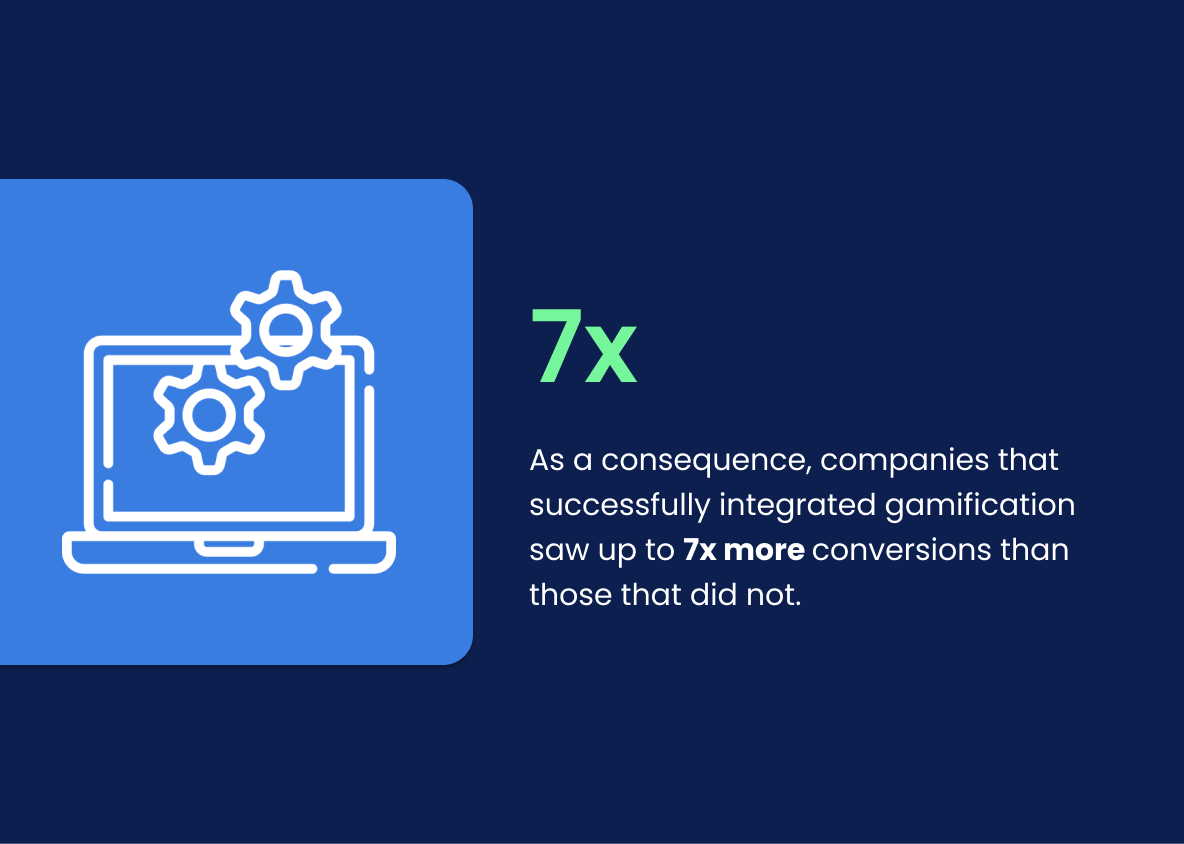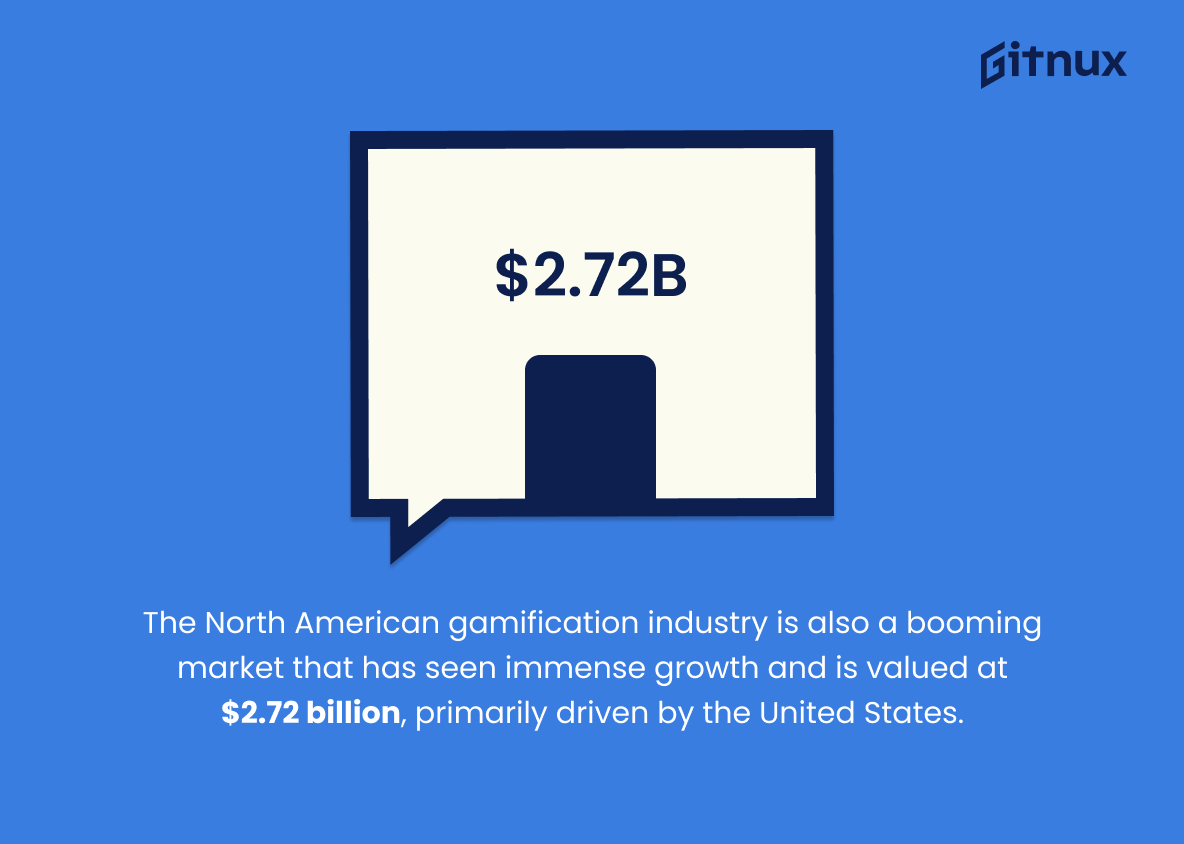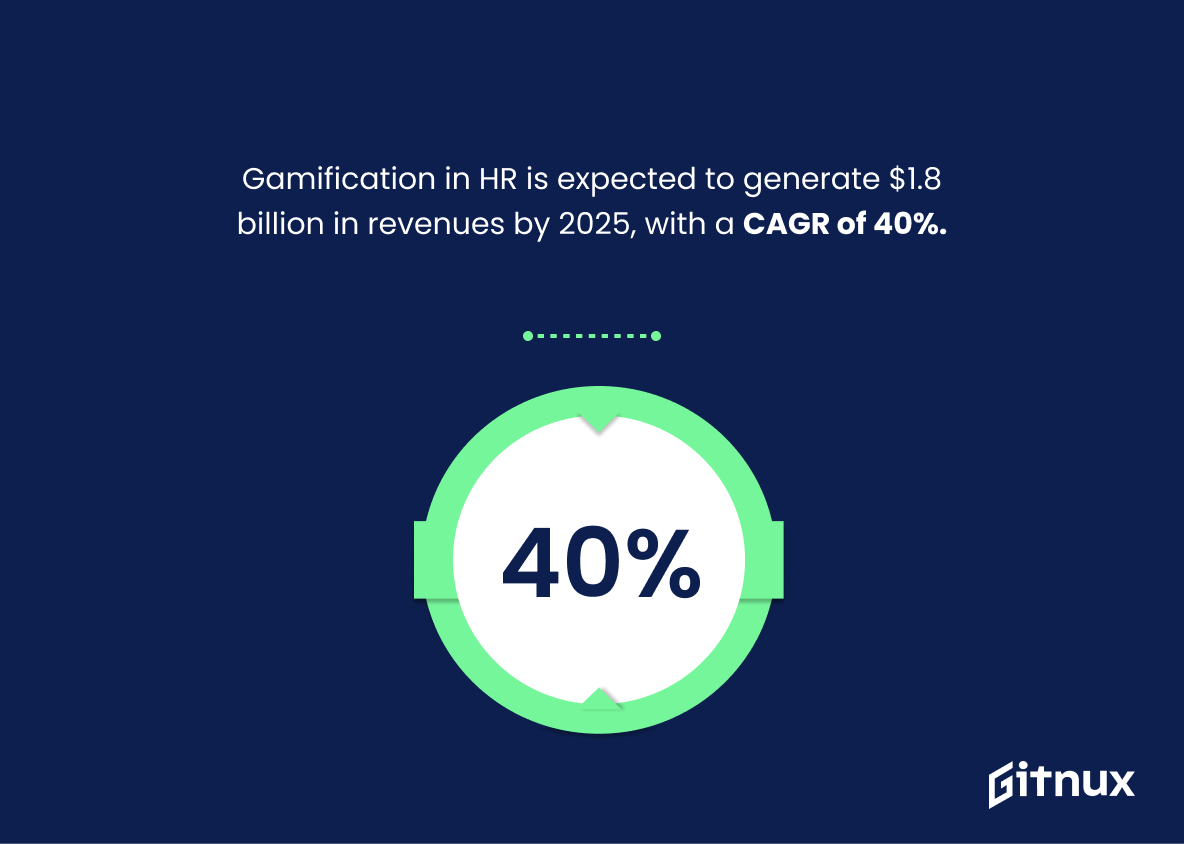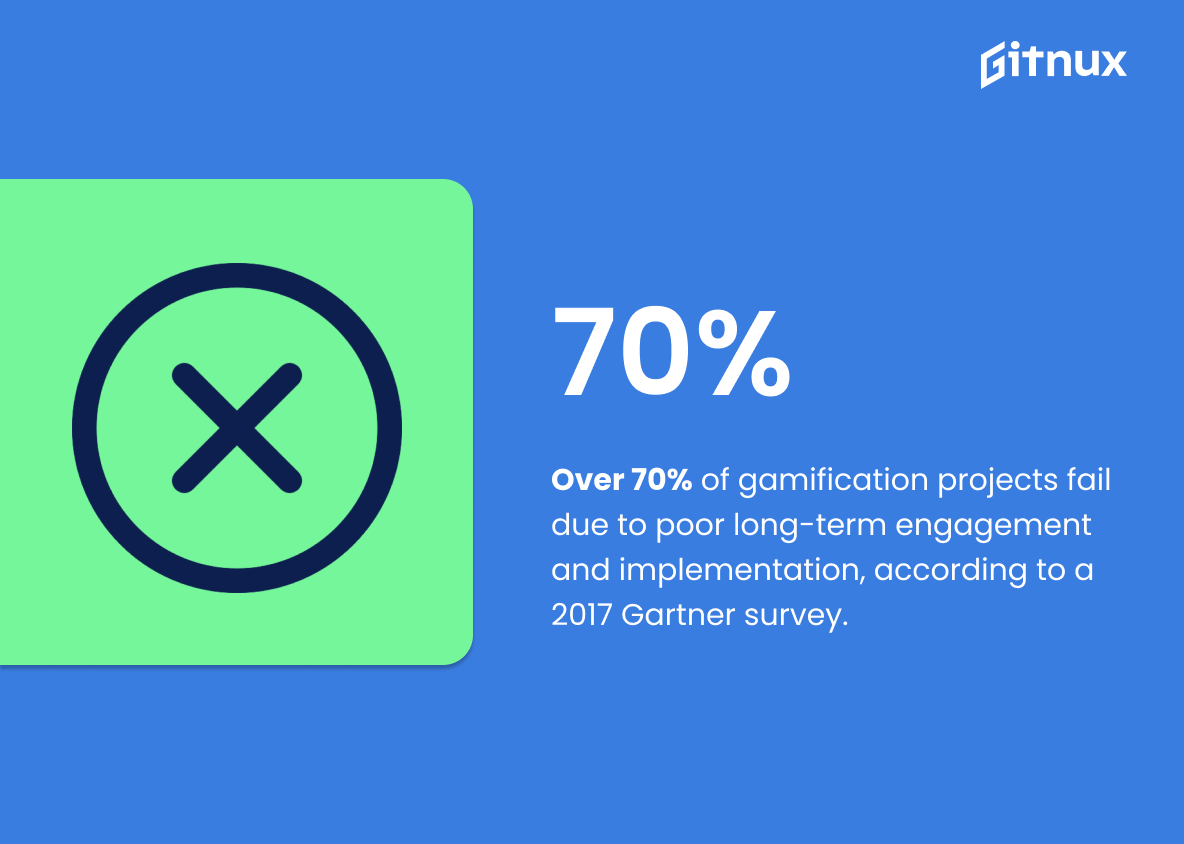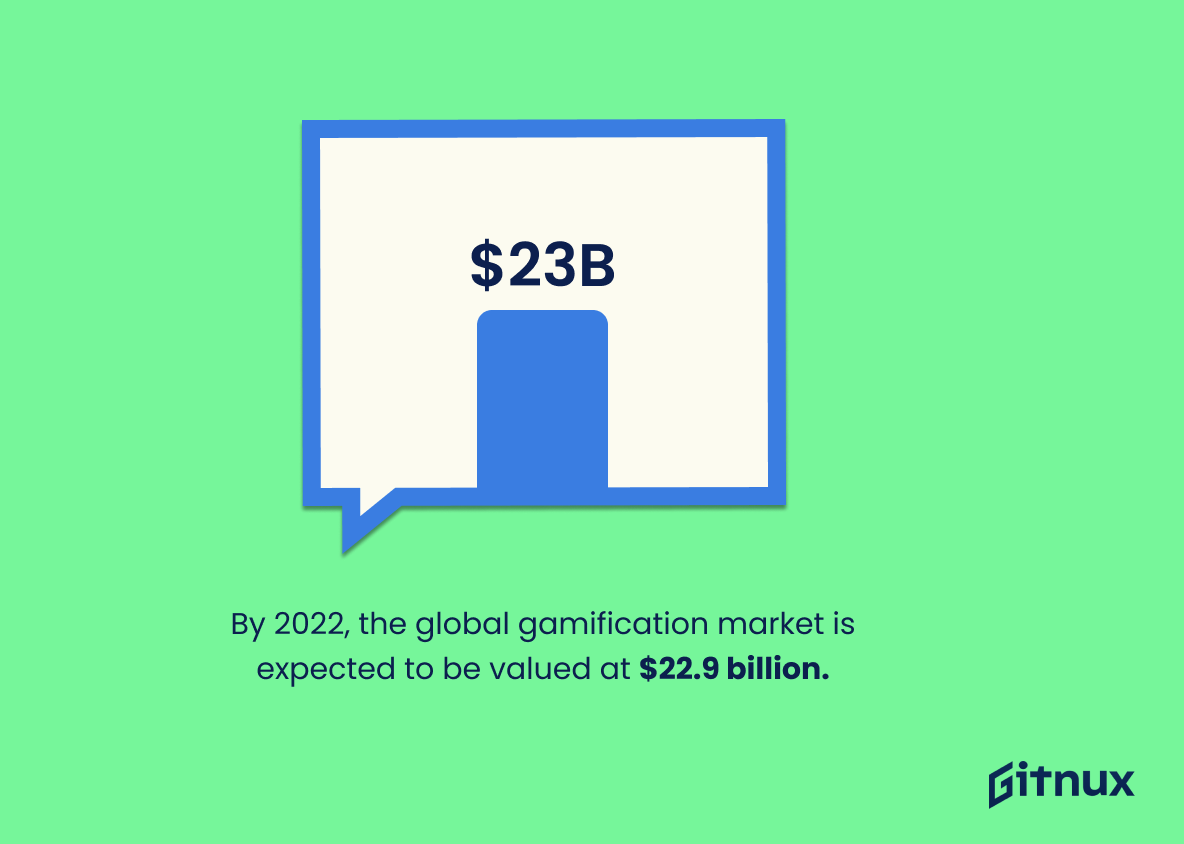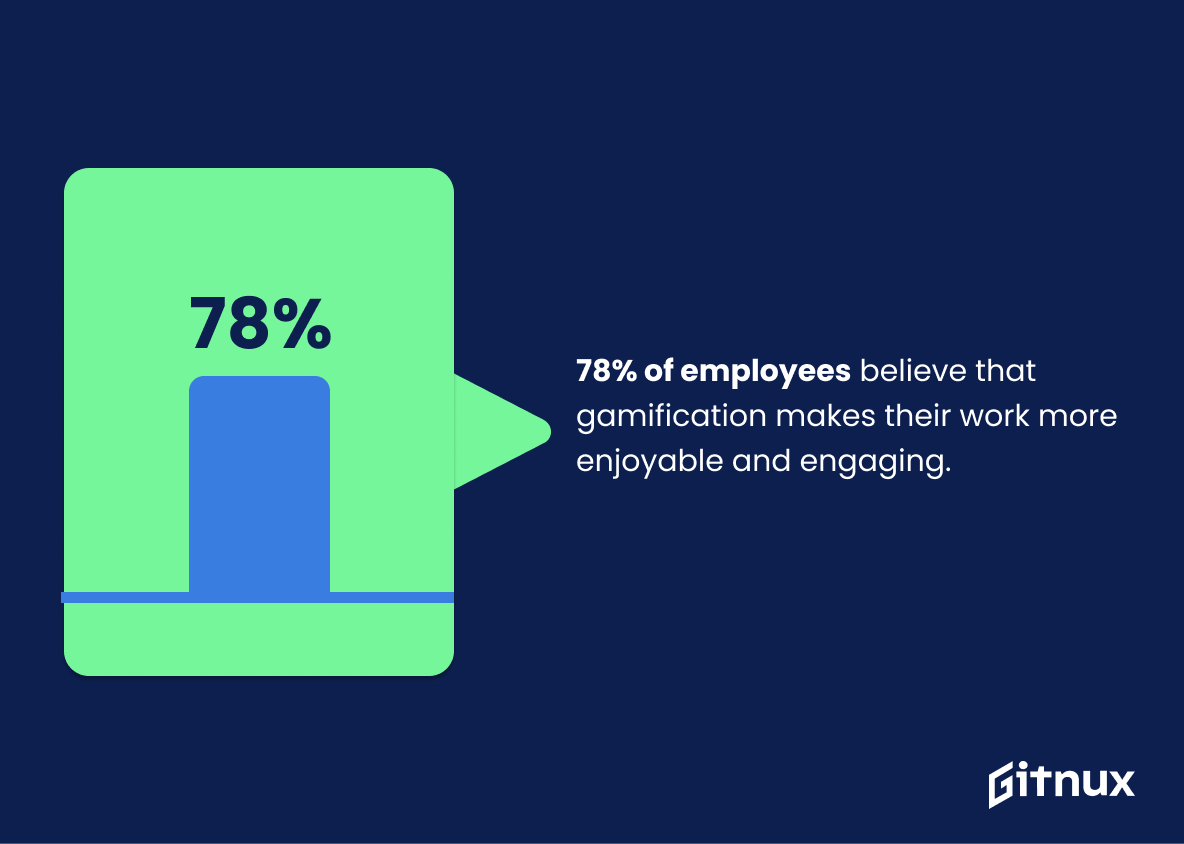Gamification has gained popularity recently as a way to boost employee engagement and loyalty in the workplace. It is applied throughout a wide range of sectors, including, among others, those of education, healthcare, finance, retail, and hospitality. Therefore, gamification statistics can provide a clear picture of how much value companies are getting from using this technology.
Are you looking to invest in a gamification platform for your company? It is important to look at the various gamification statistics available in the following article, where we will discuss the rise of gamification in the workplace, explore how it can increase employee performance, and consider its potential applications and challenges.
Gamification General Statistics
According to a recent study, gamification has been found to be effective in a wide range of industries.
The market size of gamification is expected to increase significantly over the next five years, with a CAGR of 27.4%, from $9.1 billion in 2020 to $32 billion by 2025, according to MarketsandMarkets.
In addition, a survey revealed that investments in gamification are expected to grow to a total value of $13.94 billion by 2024.
As a consequence, companies that successfully integrated gamification saw up to 7x more conversions than those that did not.
Gamification has been found to be effective in helping participants improve their skills through assessments, as scores 14% higher than non-gamified assessments have been observed.
Further, it can be an effective strategy for businesses when it comes to user acquisition, as it has the potential to bring about a 600% increase in newly registered users.
To date, the retail industry has been the most enthusiastic adopter of gamified solutions, making up 28.6% of the global market for such solutions.
The North American gamification industry is also a booming market that has seen immense growth and is valued at $2.72 billion, primarily driven by the United States.
Gamification and Work Productivity Statistics
In the past several years, gamification has also been used to increase productivity in the workplace.
90% of employees surveyed reported that they felt more productive when gamification was integrated into their work experience.
A survey conducted by Deloitte revealed that businesses that implemented gamification saw an average 41% improvement in employee engagement.
The same survey reported that 72% of employees find that gamification techniques such as setting goals, awarding points, and providing rewards encourage them to work harder and achieve better results.
For instance, FreshDesk used gamification to help their customer reps engage with their daily tasks, resulting in a dramatic 1000% increase in revenue within the first year of launch.
Additionally, according to Medium.org, 69% of employees are more likely to stay with a company for longer than three years if that company uses gamified activities.
Not to mention that gamification can help businesses drive increased customer engagement, potentially resulting in a 40% increase in customer interaction.
Gamification and eLearning Statistics
Both gamification and eLearning are rapidly growing trends, and statistics show that the benefits are too great to ignore.
Statistics reveal that 83% employees who experienced gamified training felt motivated, while only 61% of those who received traditional training were enthused by the experience.
67% of students in the United States prefer to learn to use methods that incorporate elements of games, such as rewards and competition.
Game-based learning in higher education is a rapidly growing trend, with predictions of a 15.4% growth rate from 2019 to 2024 and a $25.7 billion expected market size by 2025.
Also, it has been found that 34% is the average improvement in test scores among students who participate in gamification-based learning.
In North America, a survey found that almost 90% of instructors believe that game-based learning can improve student motivation, as well as foster creativity.
Whereas 75% think that it can facilitate the development of 21st-century skills such as collaboration, communication, and problem-solving.
Gamification in HR statistics
A survey revealed that the HR professionals who are most likely to use gamification are senior executives and those working in talent management (42%), followed by HR directors and generalists (40%).
According to Deloitte’s 2018 Global Human Capital Trends, nearly three-quarters (73%) of the 10,000 business and HR leaders surveyed said that game-based learning is an effective way to train employees.
In addition, it has been found that the recruitment process was the most popular use of gamification (38%).
The onboarding process is another area of HR that stands to benefit from the use of gamification, with nearly a quarter (24%) of the HR professionals surveyed stating they are likely to use game-based learning in the onboarding process.
Further, the onboarding phase is followed by engagement (23%), performance management (14%), and compensation/benefits (9%).
It is estimated that HR revenues associated with gamification will reach $1.8 billion by 2025, reflecting a compound annual growth rate (CAGR) of 40%.
Gamification Challenges Statistics
Despite the fact that many organisations have adopted gamification as a strategy to motivate their employees, there is still debate about its universal effectiveness.
On one hand, a survey conducted by Gallup in 2016 revealed that 87% of employees feel disengaged from their work and are looking for something more than just financial rewards, such as recognition and appreciation.
On the other hand, 63% of business owners felt that the implementation of a gamification system was too complex, requiring extensive technical knowledge and a large budget.
Also, 57% of employees felt that it was just a trend, while 24% of them felt that it was ineffective, a waste of time, or a kind of manipulation.
Additionally, survey revealed that 24% of employees did not have an understanding of the concept, while 72% did not believe they had access to the necessary resources to take advantage of the possibilities.
A survey conducted by Gartner in 2017 revealed that more than 70% of gamification projects fail due to their lack of long-term engagement and inadequate implementation.
Supplementary Statistics
By 2022, the global gamification market is expected to be valued at $22.9 billion.
Thus, gamification is a powerful tool that can be used to engage and motivate users, and its use is likely to become increasingly widespread.
Gamification has a 60% increase in engagement from users.
This shows that gamification can be an effective tool for increasing user engagement, making it an invaluable asset for any business looking to maximize their reach.
53% of technology stakeholders believe that by 2020, the use of gamification will be widespread.
The majority of technology stakeholders have faith in the potential of gamification and are expecting it to become a major part of the technology landscape in the coming years. This statistic is an important piece of evidence for anyone looking to understand the current state of gamification and its potential for the future.
In 2019, 9 out of the top 20 Forbes companies used gamification in their marketing strategies.
The top companies in the world are utilizing gamification to engage their customers and drive sales. This is a clear indication that gamification is an effective tool for businesses to reach their goals. It is a powerful reminder that gamification should be taken seriously and should be considered as a viable option for any business looking to increase their customer engagement and sales.
62% of employees say that they would be motivated to learn if the approach was gamified.
It suggests that a majority of employees are open to the idea of learning through gamification, and that it could be an effective way to motivate them. This is an important point to consider when discussing the effectiveness of gamification, and it should be taken into account when making decisions about its implementation.
Gamification leads to a 100% increase in the amount of information retained by trainees, as compared to traditional training.
Gamification can be a highly effective tool for improving the retention of information, far surpassing traditional training methods. This makes it an invaluable resource for any organization looking to maximize the efficiency of their training programs.
82% of learners said that they would be more engaged in the learning process if it was gamified.
The majority of learners would be more likely to stay focused and motivated if their learning experience was gamified. This is an important insight for educators and businesses looking to make learning more engaging and effective.
Gamification increases employee engagement levels by 48%.
This is a powerful testament to the effectiveness of gamification in boosting employee engagement. It demonstrates that gamification is an effective tool for increasing employee engagement, and can be a valuable asset for any organization looking to increase engagement levels.
The North American gamification market was estimated to be worth $4.56 billion in 2021.
The industry is growing rapidly and is expected to continue to do so in the coming years. This is an important indicator for businesses looking to invest in gamification, as it demonstrates the potential for success in the market. Furthermore, it provides a benchmark for the industry, allowing businesses to measure their progress against the market as a whole.
78% of employees believe that gamification makes their work more enjoyable and engaging.
The majority of employees find gamification to be a positive addition to their work, making it more enjoyable and engaging. This statistic is an important piece of evidence to consider when discussing the impact of gamification in the workplace, and is a valuable addition to any blog post about gamification statistics.
Gamification in eLearning increases student motivation by up to 80%.
It demonstrates that gamification can be a powerful tool for boosting student motivation, with the potential to increase it by up to 80%. This is an invaluable insight for anyone looking to incorporate gamification into their eLearning program, and is an important statistic to consider when discussing the benefits of gamification in a blog post.
Companies that have gamified training saw a 24% increase in employee performance.
When companies invest in gamified training, they can expect to see a significant improvement in employee performance. This is an invaluable insight for any organization looking to maximize the efficiency of their training program.
In 2019, the gaming app category received the highest level of investment in gamification.
The gaming industry is taking gamification seriously and is investing in it to create more engaging experiences for their users. This is an important statistic to consider when discussing the current state of gamification, as it shows that the industry is actively investing in the technology.
By 2025, the gamification in healthcare market is expected to reach $19 billion.
It speaks to the power of gamification to revolutionize healthcare, and serves as a reminder of the importance of staying up-to-date on the latest trends in this field.
An enterprise gamification survey found that 87% of employees agree that gamification makes an organization more innovative.
The majority of employees recognize the potential of gamification to drive creativity and progress. This is an invaluable insight for any organization looking to leverage gamification to unlock new ideas and solutions.
Conclusion
To conclude, it is undeniable that gamification has had a tremendous impact on the way we learn, work, and play, yet it remains to be seen how it can continue to be used and developed in the future.
Despite the difficulties, it is important to remember when to use it correctly and thoughtfully.
References
LXA Hub: “Gamification in Marketing: Stats and Trends for 2023”, cited in February 2023 (Source)
Financeonline: “54 Gamification Statistics You Must Know: 2023 Market Share Analysis & Data”, cited in February 2023 (Source)
Zippia: “25 GAMIFICATION STATISTICS [2023]: FACTS + TRENDS YOU NEED TO KNOW”, cited in February 2023 (Source)
Growth Engineering: “19 GAMIFICATION TRENDS FOR 2023-2025: TOP STATS, FACTS & EXAMPLES”, cited in February 2023 (Source)
Review42: “Top Gamification Statistics of 2022: Next Level Gaming”, cited in February 2023 (Source)
HR Cloud: “Gamification in HR: Use Cases and Best Practices”, cited in February 2023 (Source)
Ech360: “What are the Advantages and Disadvantages of Gamification?”, cited in February 2023 (Source)
Learnlight: “The Top 5 Benefits of Gamification in Learning”, cited in February 2023 (Source)
ZipDo, cited June 2023: Gamification Statistics
